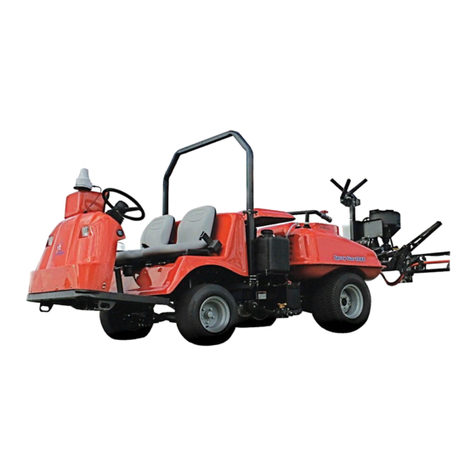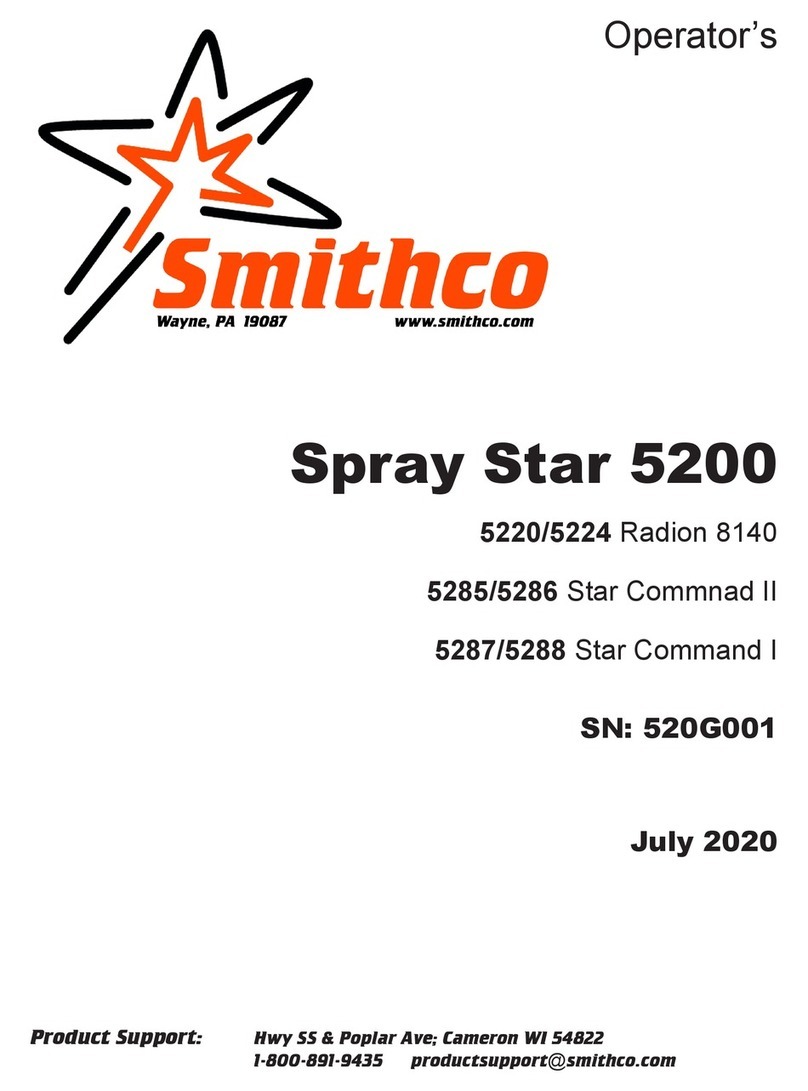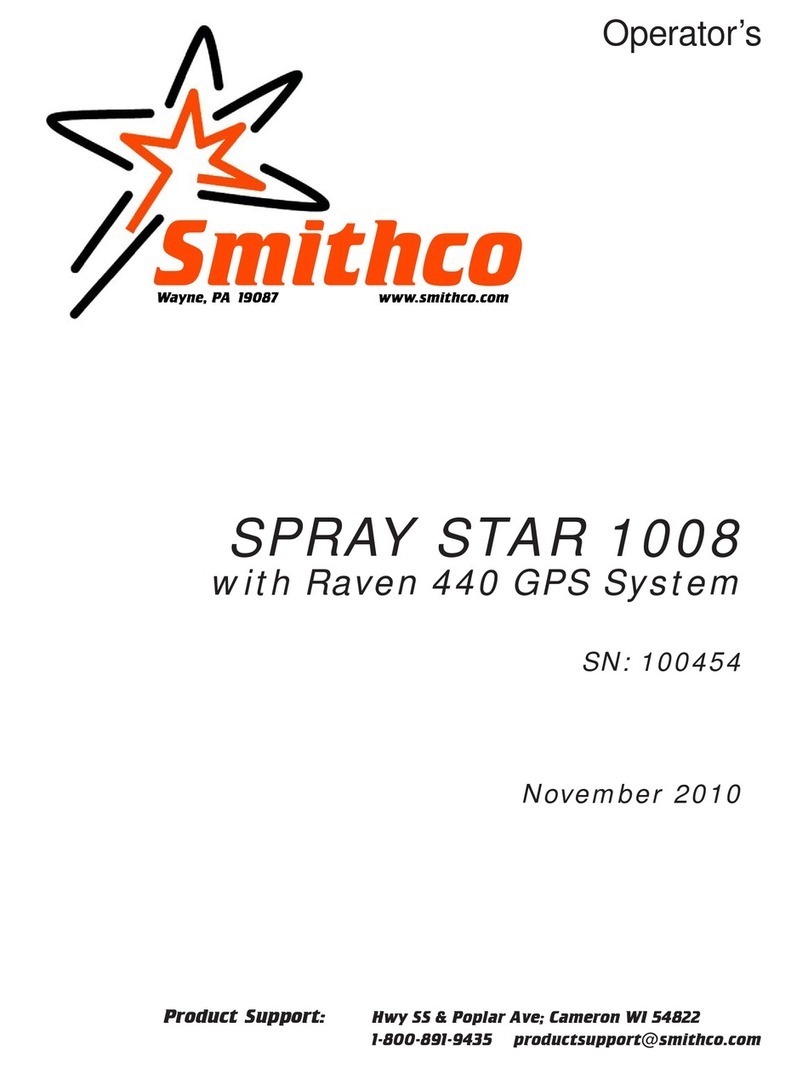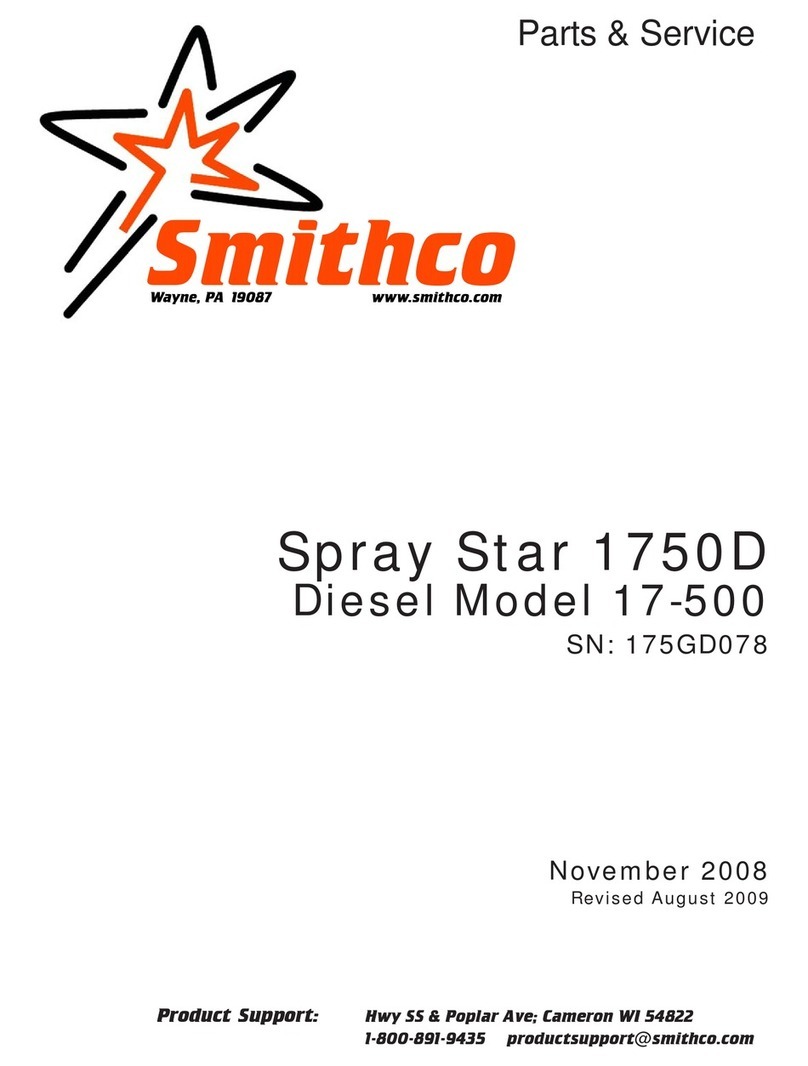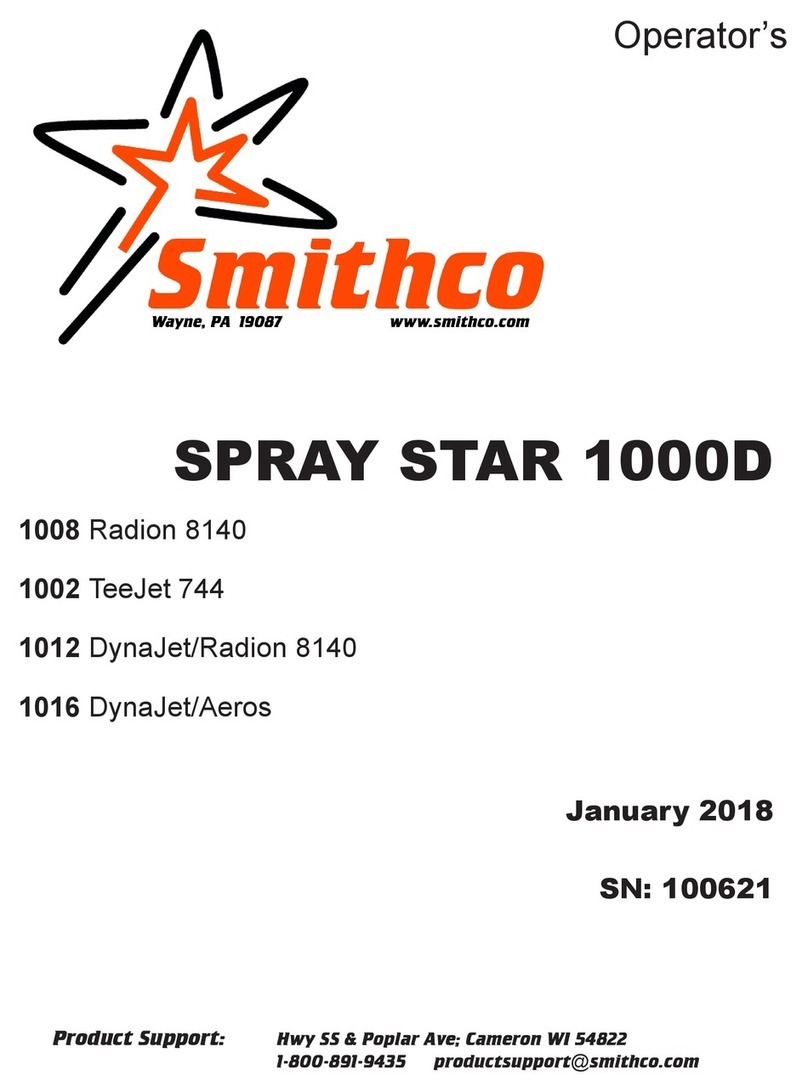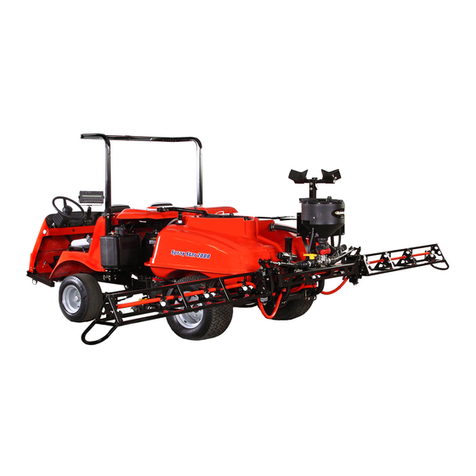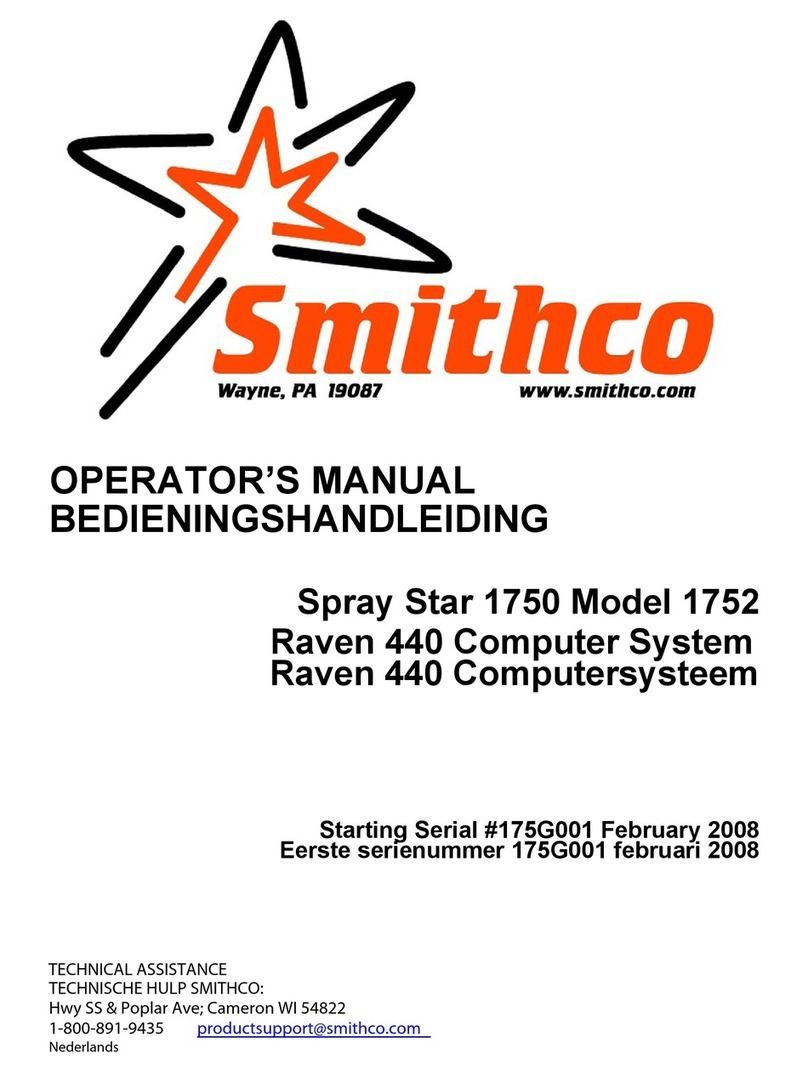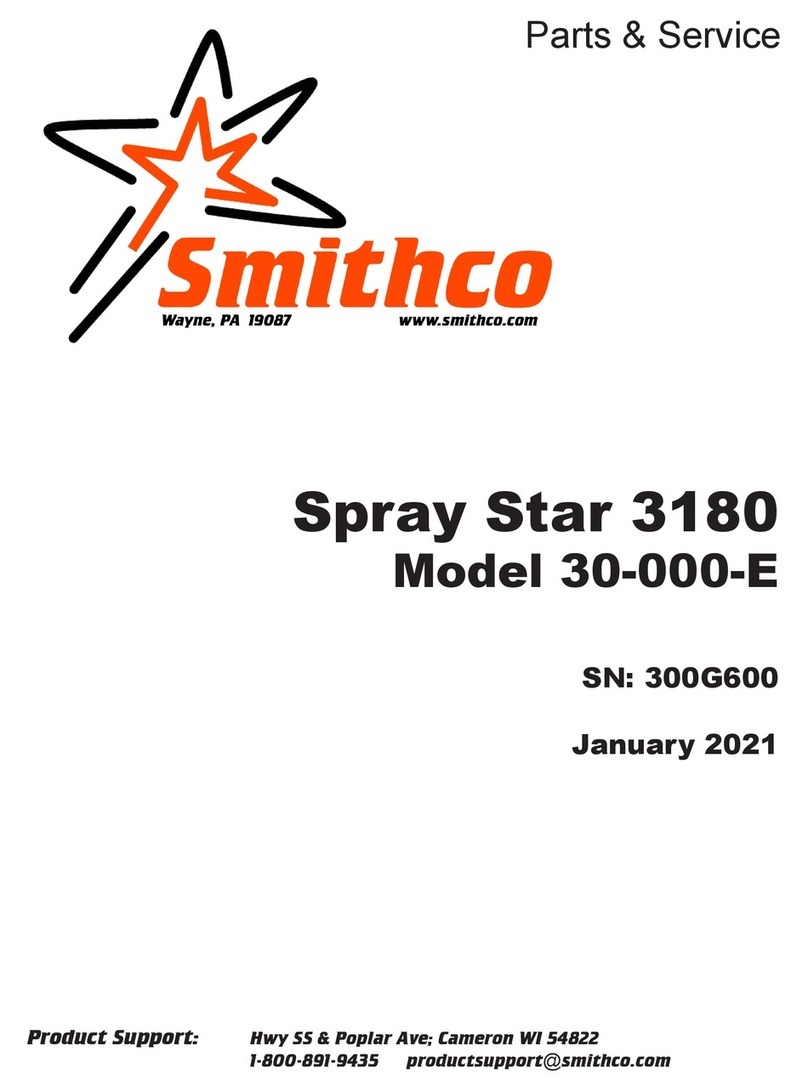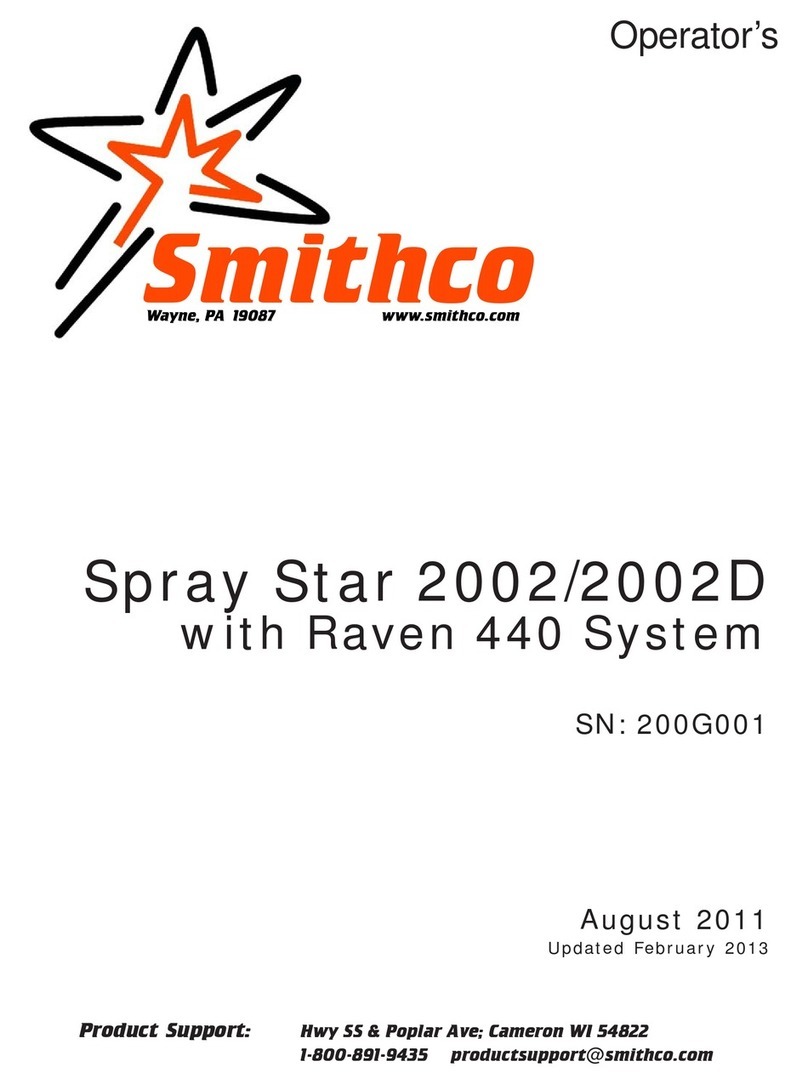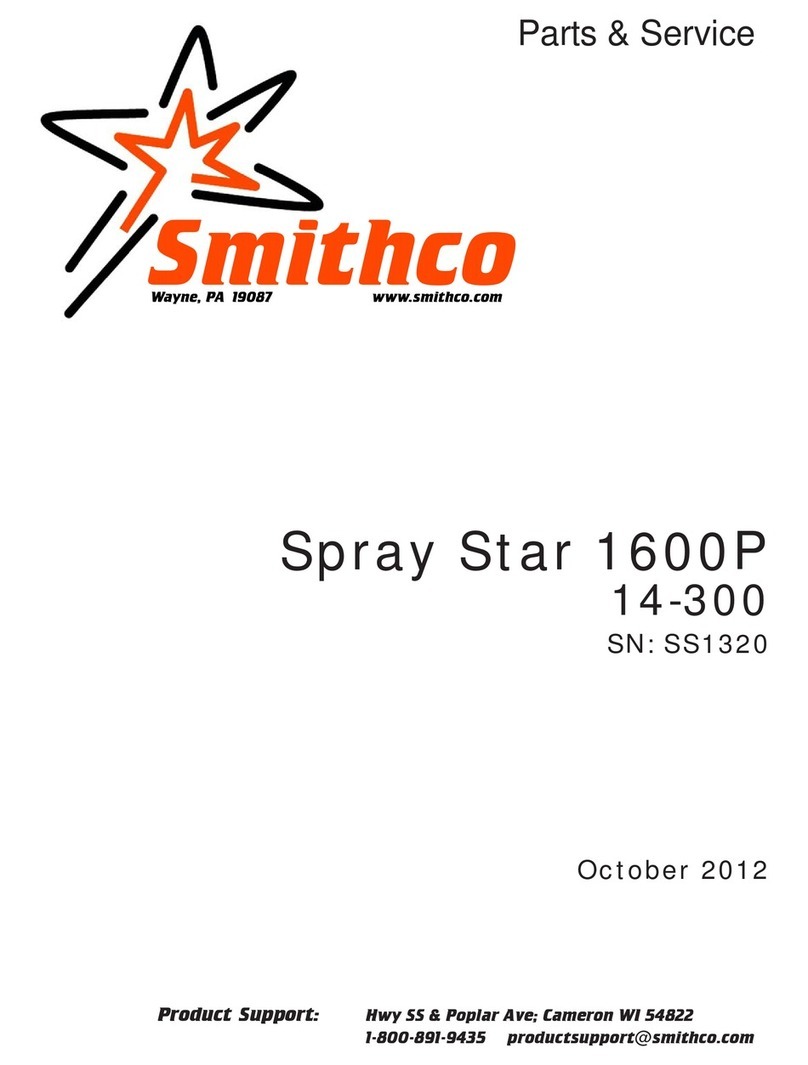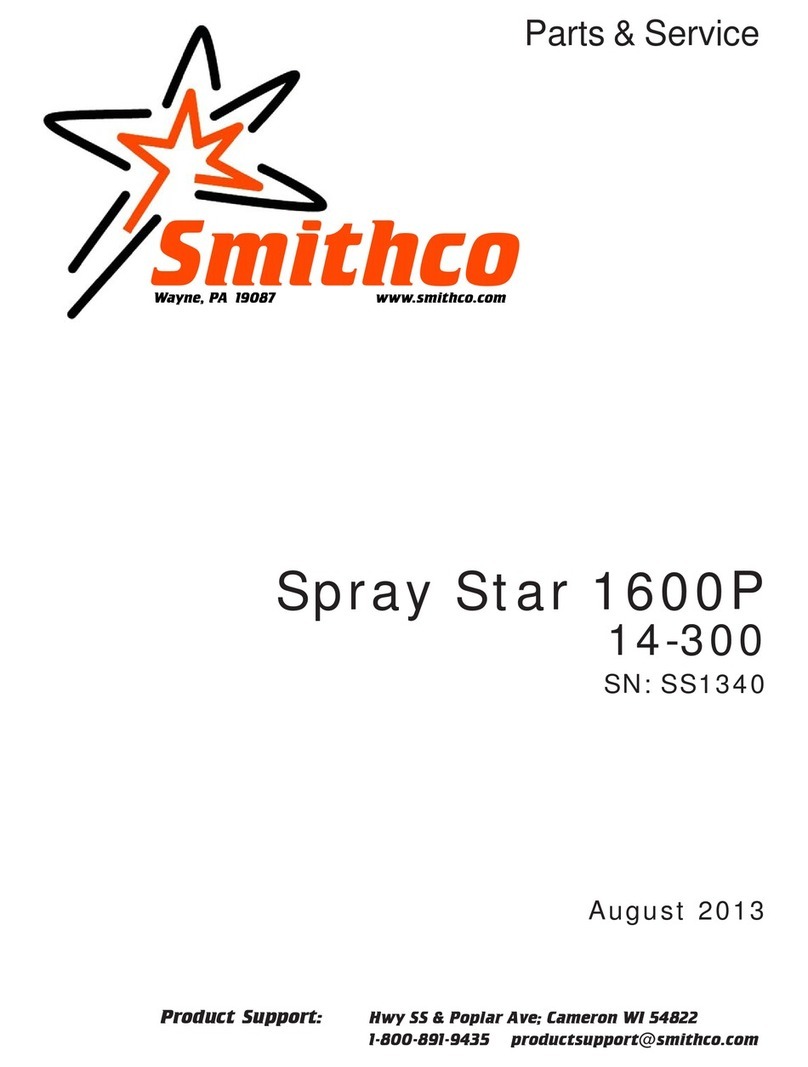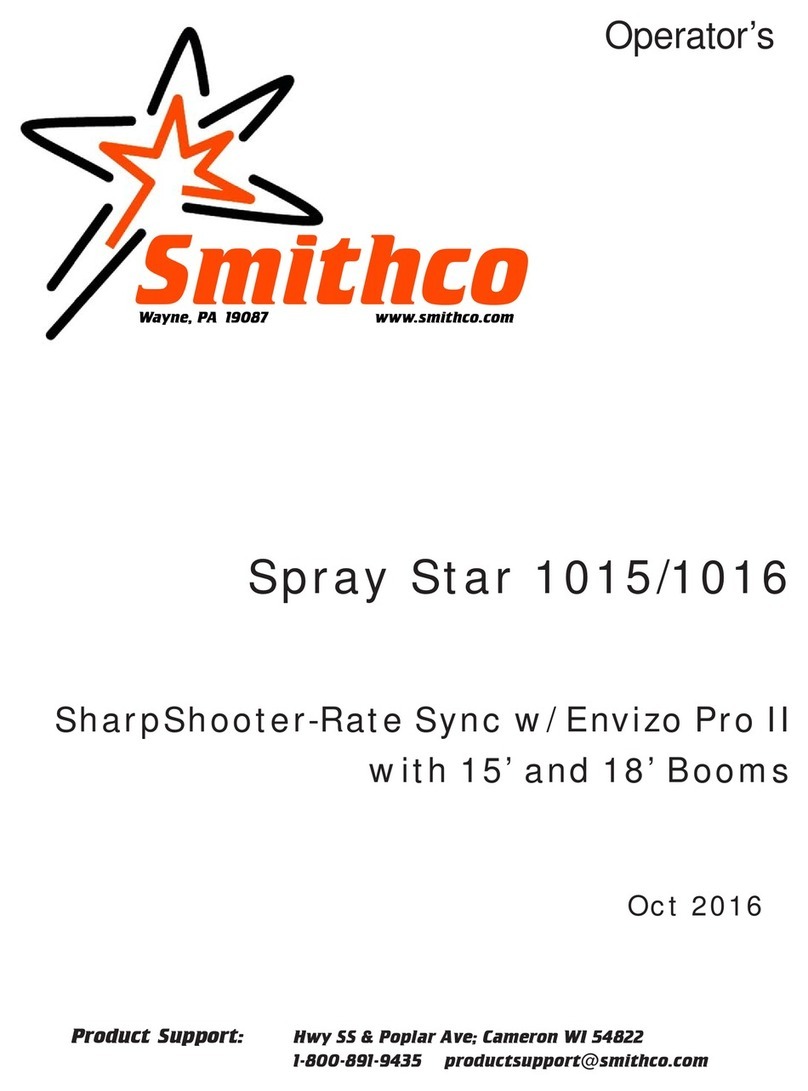
4
Introduction
PARTSMANUALSAVAILABLEONLINEATsmithco.com
SAFEPRACTICES
1. It is your responsibility to read this manual and all publications associated with this machine.
2. Neverallowanyonetooperateorservicethemachineoritsoptionalequipmentwithoutpropertrainingand
instructions.Neverallowminorstooperateanyequipment.
3. Learntheproperuseof the machine, the location and purpose ofallthe controls and gauges before you
operatetheequipment.Working with unfamiliar equipment can lead to accidents.
4. Wear all the necessary protective clothing and personal safety devises to protect your head, eyes, ears,
hands and feet. Operate the machine only in daylight or in good artificial light.
5. Inspect the area where the equipment will be used. Pick up all debris you can find before operating.
Bewareofoverheadobstructionsandundergroundobstacles. Stayalertforhiddenhazards.
6. Neveroperateequipmentthatisnot in perfect working order or without decals, guards, shields, orother
protectivedevicesinplace.
7. Never disconnect or bypass any switch.
8. Carbonmonoxideintheexhaustfumescanbefatalwheninhaled,neveroperateamachinewithoutproper
ventilation.
9. Fuel is highly flammable, handle with care.
10. Keepengineclean.Allow theengine to cool before storing and alwaysremovethe ignition key.
11. Disengagealldrivesandsetparkbrakebeforestartingtheengine.
12. Neveruse your hands to search foroil leaks. Hydraulic fluid under pressurecan penetrate the skin and
cause serious injury.
13. Thismachinedemandsyour attention.Topreventlossof control or tipping of the vehicle:
A. Use extra caution in backing up the vehicle. Ensure area is clear.
B. Do not stop or start suddenly on any slope.
C. Reduce speed on slopes and in sharp turns. Use caution when changing directions on slopes.
D. Stay alert for holes in the terrain and other hidden hazards.
14. Beforeleaving operator’sposition:
A. Disengagealldrives.
B. Set park brake.
C. Shut engine offandremovetheignitionkey.
D. If engine has to run to perform any maintenance keep hands, feet, clothing and all other parts of body
awayfrommovingparts.
15. Keephands,feet and clothing away from moving parts. Waitforall movement to stop before you clean,
adjustorservicethe machine.
16. Keepthearea of operation clear of all bystanders.
17. Nevercarry passengers.
18. Stopenginebeforemakingrepairs/adjustmentsorchecking/addingoiltothecrankcase.
19. Use parts and materials supplied by Smithco only. Do not modify any function or part.
20. Use caution when booms are down as they extend out beyond the center line of the machine.
21. The tank is a confined space, take precaution.
These machines are intended for professional maintenance on golf courses, sports turf, and any other
area maintained turf and related trails, paths and lots. No guarantee as to the suitability for any task is
expressed or implied.

